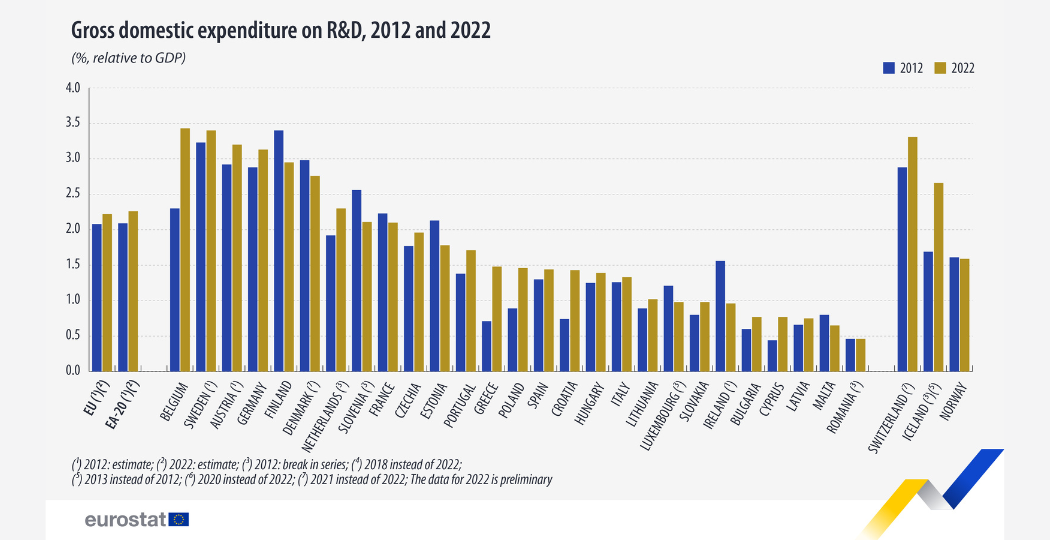
Spending on research and development in the EU increased by 6.34% in 2022, to reach €352 billion, new Eurostat data shows.
But despite the increase, R&D intensity - the amount spent on R&D as a percentage of GDP - fell slightly, from 2.27% in 2021 to 2.22% in 2022. This could be a reflection of the rebound in GDP in 2021, following a big drop off in 2020 caused by the COVID-19 pandemic.
The graph shows the difference in R&D intensity between 2012 and 2022, which overall in the EU has increased by 0.14 percentage points.
Two decades on from a 2003 action plan setting out the goal of increasing R&D intensity to 3%, the EU remains well short of this. Then the aim was to reach this target by 2010, the latest plan sets the target at 2030.
The US and Japan have long surpassed the 3% rate, spending 3.46% and 3.34% respectively, according to 2021 data. China’s R&D intensity is also higher than the EU’s, at 2.41% as of 2020, according to Eurostat.
Within the EU there are large disparities. Belgium, Sweden, Austria and Germany have an R&D intensity of over 3%. Meanwhile, it is below 1% in eight countries, mostly in central and eastern Europe. Romania has the lowest R&D intensity at 0.46%; followed by Malta on 0.65%; Latvia 0.75%; Cyprus 0.77%; and Bulgaria 0.77%.
Despite falling short of the 3% target, R&D intensity has increased in most member states in the past decade. The biggest increases have been in Belgium, Greece and Croatia. The biggest fall by far was in Ireland, which now has an R&D intensity of 0.96%, compared to over 1.5% a decade ago.
Of the Widening group of countries that are provided with support to help them catch up in the Horizon Europe research programme, Slovenia has the highest R&D intensity at 2.11%, followed by Czechia at 1.96%.





 A unique international forum for public research organisations and companies to connect their external engagement with strategic interests around their R&D system.
A unique international forum for public research organisations and companies to connect their external engagement with strategic interests around their R&D system.